#sky bison
Explore tagged Tumblr posts
Text
AU where Azula finds a sky bison and adopts it and has to learn how to raise it (with a lot of help from Ty Lee who is much better with animals and adores it)
23 notes
·
View notes
Text
Atla-fauna appreciation post
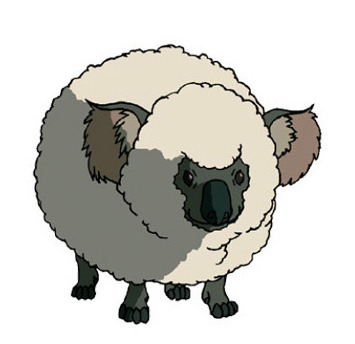





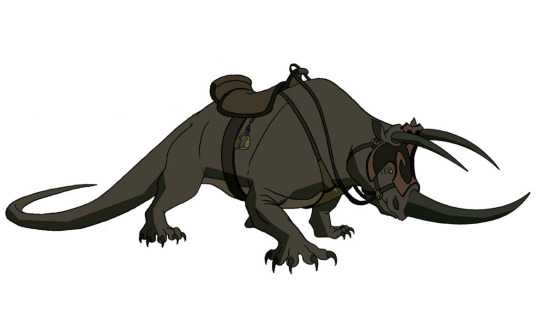

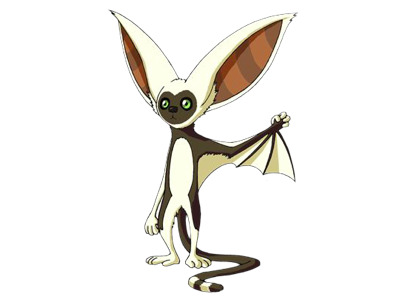

I just love them all.
(This post has no point. I just want a collection of ATLA animals on my blog…)
#atla#avatar the last airbender#atla fauna#koala sheep#rabbiroo#platypus bear#otter penguin#badgermole#turtle seal#komodorhino#sky bison#appa#lemur#momo#turtle duck#turtle duckling#official art
6K notes
·
View notes
Text
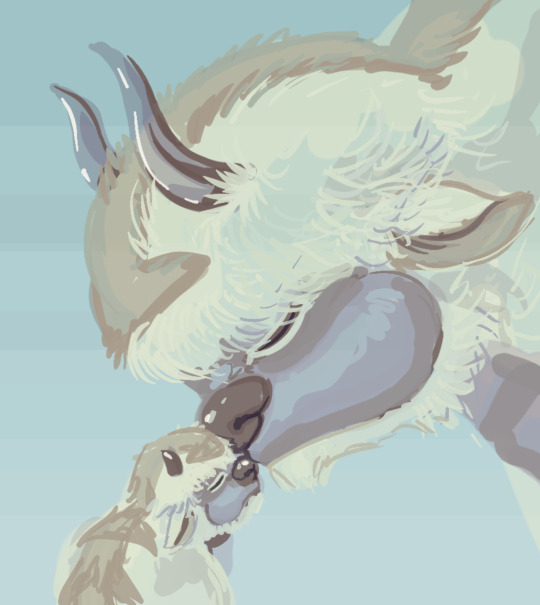
Mother’s love
3K notes
·
View notes
Text
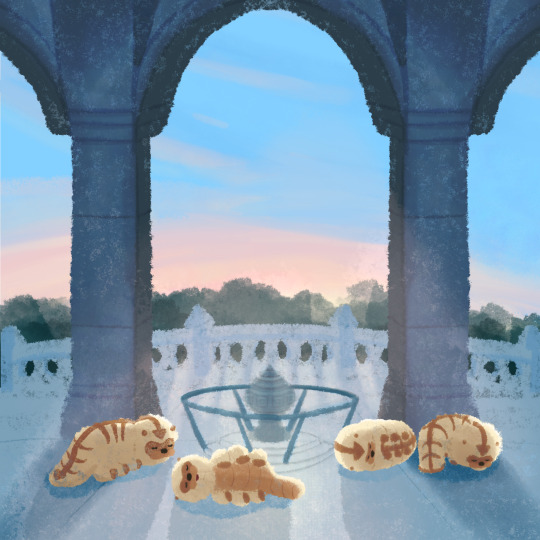
Sleepy Sky Bison babies :)
1K notes
·
View notes
Text
How it started vs how it ended: Yangchen edition


#the dawn of yangchen#the legacy of yangchen#nujian#yangchen#fanart#avatar the last airbender#sky bison#chronicles of the avatar
349 notes
·
View notes
Text
What a fantastic brilliant cute artwork ❤️✌️🥰
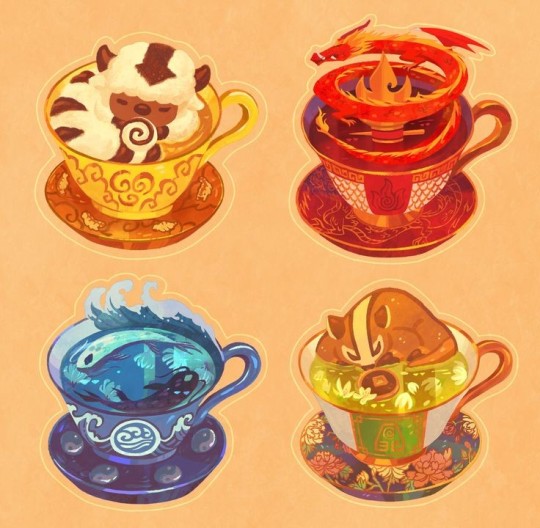
🦬🐉🎏🦡
🌬️🔥🌊⛰️
#avatar firelordzuko#avatar the last airbender#avatar artwork#the four elements#atla fanart#dragon#koifish#sky bison#badgermole#so cuuuute#avatar animals
782 notes
·
View notes
Text





Avatar Sweaters from Stitch Spring
#avatar#avatar the last airbender#atla#water tribe#fire nation#air temple#earth kingdom#clothing#sweaters#cardigans#appa#sky bison
150 notes
·
View notes
Note
Drawing ideas (a list for you to choose):
Appa (with Momo if you want)
Swamp benders
Wan Shi Tong's library
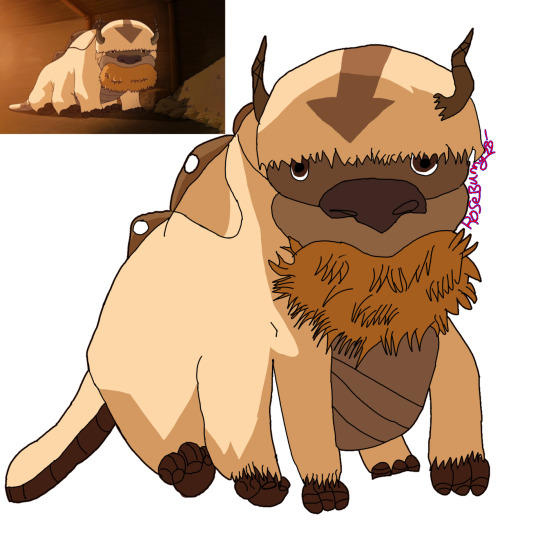
Hope you like it
#avatar the last airbender#atla#appa atla#appa avatar#atla appa#appa#art#atla art#atla fanart#avatar fanart#fanart#my art#digital art#artwork#artists on tumblr#sky bison#hay#appa eating hay#art requests#request#asks#answered asks#answered#atla sky bison#rose bunny art#im watching scream#my art <3#rose bunny answers#🌹🐇 art
68 notes
·
View notes
Note
how bout an appa drawing? :D
Or aang rainbow fire bending?
You pick! 😌
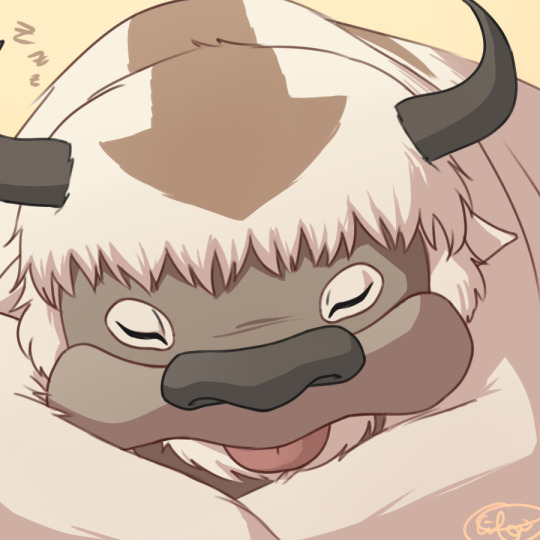
I don't think I've ever drawn Appa before!
[ID in alt text.]
#avatar#atla#avatar the last airbender#appa#sky bison#airbender#animals#cartoon#art#digital art#artists on tumblr#illustration#circe draws
245 notes
·
View notes
Text
Republic City Zoo Animal Informational Article -- Sky Bison
Article by Keeper Lao of the Republic City Zoo, published in 176 AG
Research compiled with sources from Air Temple Island Archives

Sky Bison, Air Bison, Flying Bison. Whatever name you know it by, this marvelous creature is almost synonymous with Airbenders – and for good reason, as these animals have been their preferred companions for thousands of years!
Sky Bison nearly became extinct during the Hundred Year War due to the efforts of former Firelord Sozin. For a while, it was assumed that Appa, the iconic companion of Avatar Aang, was the last remaining Sky Bison in the world. However, after the war ended, a small population was revealed to have survived on a remote island, being protected by a group of sympathetic Fire Sages. All Sky Bison living today are direct descendents of this hidden population. Sky Bison were dedicated as an endangered species by Avatar Aang, and action has been taken all over the world to ensure their continued survival.
Prior to the Hundred Year War, both wild and domestic Sky Bison existed. Sky Bison were domesticated over hundreds of years by Airbenders. Domestic bison show a few noticeable differences to their wild counterparts, though both were able to interbreed with one another. Domestic bison are considered a subspecies of wild bison.
Wild Sky Bison
What differentiated a wild Sky Bison from a domesticated one was a simple, but major difference: wild bison did not depend on humans, nor did they seek out their companionship. Domesticated Sky Bison are just as attached to Airbenders as Airbenders are to them, and even domestic bison that are raised feral will be very receptive to human companionship when offered. Meanwhile, wild Sky Bison were very skittish and fearful of humans, avoiding them whenever possible.
Domestic Sky Bison
As mentioned before, domesticated Sky Bison create very deep relationships with Airbenders. Airbenders are the only type of bender they create this bond with. While they can be friendly to people of all Nations, only an Airbender can truly become their lifelong companion. This is likely due to their shared bending history; Sky Bison are also Airbenders, and like seems to call to like.
Before the Hundred Year War, there were two different breeds of Sky Bison. These were the Eastern and Western breeds. Large herds of bison were maintained at the Eastern and Western Air Temples, as the temperate climate is ideal for bison calves. Due to the separation of the temples, differences began to emerge between the two populations, eventually becoming distinct enough to be recognized as different breeds.
The Western Sky Bison is the only current surviving breed. Compared to the Eastern bison, the Western bison has a thinner stripe pattern along its back, and tends to have slightly darker fur, including brown ears rather than white. Their horns are also curved at a slightly different angle. Western Sky Bison were selectively bred for their fur, which is of higher quality than that of the Eastern Sky Bison. Eastern bison were selectively bred for their milk production, and tend to produce more milk with a higher fat content than the Western bison.
As bison calves were largely born and raised at the Eastern and Western temples, Airbenders from the Northern and Southern temples would travel to their sister temples when it was time to bond with bison. Monks from the Northern temple would travel to the Western, while monks from the Southern temple would travel to the Eastern.
Today, the largest breeding population of Sky Bison is kept on Air Temple Island, the main hub for all Airbenders in the world. The Republic City Zoo is also proud to host a small but prolific herd as well.
Sky Bison Biology
Physical Traits
Sky Bison are massive, six-legged creatures, capable of carrying a multitude of people and supplies. They are extremely muscular and powerful, able to smash through rocks and even create shockwaves with a single slap of their tail. They are able to Airbend, and therefore spend plenty of time off the ground. They are highly adapted for long-distance and high altitude travel, and are able to survive for a long time on low-quality forage.
All Sky Bison have a thick, double layered coat consisting of a white or cream base and patterned with brown stripes. These stripes end in an arrow point on their forehead, and it is this pattern that inspired the iconic Airbender arrow tattoos. All have horns, though their shape and length can vary greatly due to breed, size, and other environmental factors. These horns are used for defense against predators, and on males, for showing off their battle prowess during mating season.
The underbelly of the Sky Bison is hairless, dark, and leathery, and protected from the cold climates they hail from by a thick layer of fat. All bison also have a hump over their shoulders, which is another area of fat storage. This hump can grow or shrink depending on a bison’s access to food and water. Their feet are covered in hair except for their three toes, which are similar to their underbelly in look. Their toes are long, each with three knuckles, allowing them to have a minor amount of dexterity to the point of being able to grasp and pick up some objects. Unlike other herbivorous creatures, the eyes of Sky Bison are located on the front of their faces rather than the sides, likely due to their large size deterring most predators.
Sky Bison have five-chambered stomachs, which allows them to digest even the toughest of plant material and access as much nutritional content as possible. Their teeth are large and flat, perfectly adapted for grinding down their food.
Male and female bison have very few differences, and are difficult to tell apart from a distance. Females tend to be slightly larger, and are more likely to have a noticeable udder.
Flight
Many would assume that these giants couldn’t possibly become airborne, but that is not the case! Sky Bison are capable of Airbending, and keep themselves aloft by controlling the air currents around them.
Their large, paddle-like tails are used to generate both thrust and lift to get them off the ground, where they can then take over with Airbending. While in the sky, their tails act as propellers and rudders, essential for steering and controlling speed. Due to Sky Bison having the skill of Airbending, they are able to remain in the sky for longer than any other animal in the world, as they do not have to move their body to fly.
Bison spend much of their time in the air, and seem to take great joy in flight. Many Airbenders fondly report the different Airbending tricks their giant companions play on them, as they can manipulate the air around them with all parts of their body.
Diet
Sky Bison are herbivorous, meaning their diet consists entirely of plants and plant material. Though they are able to consume non-plant materials such as eggs or honey, these foods are only eaten in times of extreme desperation.
Bison can eat a wide variety of plants, but most of their foraging comes from grazing on grass or eating from the tops of trees while they fly. Domestic bison are often given hay or vegetables as part of their diet if adequate grazing material is not available.
Due to the unique structure of their stomach, Sky Bison are able to persist on very low-quality forage for a long time. They can also eat parts of plants other animals cannot, such as sticks or tree bark. Their stomachs allow them to extract all the nutrients they need.
Herd Structure
All Sky Bison are very social creatures, though domestic bison generally do not form permanent herds. Instead, they form a very strong bond with a singular Airbender, and will be companions their entire life. If their Airbender companion dies, the bison will rarely bond with another.
Wild and feral Sky Bison do form herds, usually consisting of about 6-8 adults and 1-2 litters of juvenile calves. Herd hierarchy is not sex-based, but rather age-based, with the oldest and most experienced bison dictating where the herd travels. Herds are made up of a mix of unrelated males and females. Calves remain with their birth herd until around 4-5 years of age, and then will go off on their own to find other bison of similar ages to form their own herd.
Males will be aggressive with one another when a female goes into estrus, also known as heat. While their battles can look very impressive, permanent injuries are rare. The female bison in heat will select the most impressive male to mate with; usually whichever one wins more fights, but some females have been observed to have different preferences. All Sky Bison in a herd work together to protect and raise calves, though the females are typically far more aggressive. Females will nurse their herd mates' calves if they are in milk, and all members will take turns watching calves while they are grounded, making their parenting style extremely communal.
Life History
The mating season of the Sky Bison takes place during the summer, lasting from around the months of June to early September. Bison are seasonally monestrous, meaning their estrous cycles are triggered by the amount of daylight, and they only experience one estrous cycle per breeding season. Sky Bison begin to go into estrus when the days become longer.
Female Sky Bison become sexually mature at around 6 years old, while males are mature at around 4. The mating of domestic bison is usually controlled by their Airbender companion, but even wild and feral Sky Bison have very long pauses between each litter. Most females average around five years between the weaning of one litter and the pregnancy of another, and do not go into estrus during this time. While male Sky Bison are fertile most of their lives, females experience a significant drop in reproductive ability about halfway through their lives, making pregnancy after this point quite rare. Sky Bison are extremely long-lived, with an average lifespan of 60-70 years. Accounting for the time of maturity, most females can produce an absolute maximum of 6 litters – though they typically only end up having 3-4.
After mating, Sky Bison go through a gestation period of around 410 days, approximately 14 months. Pregnant bison can still produce milk throughout their pregnancy if they are helping to nurse other calves, though they will enter a “dry period” in the final 2-3 months of pregnancy. Milk production will stop, allowing the expectant bison to rest, save energy for birth, and produce colostrum for her own calves.
Calving season takes place in the autumn, from the months of August through November. When a bison goes into labor, her herd mates will form a protective ring around her to guard her and the newborn calves from predators. As domestic bison usually lack herds, this role is fulfilled by Airbenders.
Bison litters are typically around 3-5 calves. Sky Bison have 6 teats on their udder, so litters larger than 6 may struggle to get enough food without additional help. Calves are born fully alert, with a full coat of hair and small horn buds that will begin to grow soon after birth. Their mother will lick them to warm them up and stimulate them, and the calf will usually be walking and nursing within an hour.
While Sky Bison calves are able to walk at birth, it takes them a few weeks before they are able to fly. This period is referred to as “being grounded”. During this time, a wild herd will remain close to the ground, with at least one bison watching the calves or remaining extremely close by to protect them. Calves will typically begin flying at around 2-3 weeks of age.
The milk of a lactating Sky Bison is extremely rich and fatty. This is one of the reasons bison calves grow so quickly. Calves begin weaning at around 6 months old, and this is usually the time domestic bison are introduced to their future Airbending companions. At 3 years old, the Sky Bison will have reached its adult size and weight. Sky Bison will leave to seek out their own herds at around 4-5 years of age. This separation is usually triggered by the onset of sexual maturity (or, as we keepers like to call it, Sky Bison puberty). Adult bison can reach up to ten tons in weight.
Behavior
Though their large size makes them very intimidating, Sky Bison are known for being gentle giants. They are very docile creatures for the most part, and will only show aggression if they feel threatened or stressed out.
Sky Bison are a diurnal species, being most active during the day and sleeping at night. Most of their day consists of foraging, eating, flying, and napping.
Herds of wild bison (and today, feral bison) typically follow similar flight patterns each year. The leader of the herd remembers the best places to eat and rest, and will teach these routes to the next leader. Prior to the war, many rural areas could expect to see herds of bison returning to the same places year after year.
Both domestic and wild bison have frequently been observed playing. Sky Bison of similar ages will often play-fight, headbutt each other, and spend time chasing one another on the ground and in the sky. Older bison will also play with younger ones as a means of teaching them important life skills. Airbenders often make time to play with their bison companions, or allow them time to play with others. It is noted that Sky Bison often don’t seem to know their own strength while playing with people, and it is not uncommon to see an Airbender receive a full-body tackle from their ten-ton best friend!
Sky Bison are incredibly intelligent creatures with an astounding memory. The bond between bison and Airbenders speaks to this intelligence, as bison learn a large range of commands, phrases, and even gestures so they can work seamlessly alongside their companion. Their memory is also incredibly impressive – a Sky Bison never forgets.
Sky Bison Products
Sky Bison and Airbenders have an extremely symbiotic relationship. The bison provide many of the Air Nomads’ needs, including transportation, food, fiber, and even fuel.
It is well known that bison are largely used for transportation. They are the preferred mode of travel for Airbenders, and can traverse huge distances at incredible speeds. The relationship between a bison and their Airbender is so close that many of them are able to direct their bison without reins!
As previously mentioned, Sky Bison milk is extremely nutritious. Airbenders famously do not eat meat, but bison milk is a massive part of the traditional Air Nomad diet. The milk is drank plain, and made into other foods such as butter, cheese, and yogurt.
Unlike some other nations with dairy-producing animals, Air Nomads did not harvest milk from their bison until their calves were fully weaned. Even if it is not feeding calves, a Sky Bison will continue to produce milk for as long as it is being stimulated to do so. The main herds at the Eastern and Western temples historically contained several “nurse cows”; bison who were kept in milk all year round. This would allow for milk to still be harvested outside of calving season, as well as providing surrogates for bison calves who needed it. Many Air Nomads would not want to be without their bison for extended periods of time, so they would transplant the calves to the nurse cows, milk their bison for a few months to provide for their temple, and then allow them to dry off before returning to their nomadic ways. Although Sky Bison are extremely protective of their calves, their bond with their Airbender is even stronger.
Sky Bison also provided a major source of fuel for the Air Nomads. Bison produce plenty of dung, and because it is mostly comprised of plant fiber, it burns extremely well after being dried. This provided a traveling source of fuel for nomadic Airbenders, as well as a very consistent fuel source at the Air Temples.
Lastly, Sky Bison fur can be used for many things. Bison go through a molt in the springtime. It is hypothesized that this is both due to the warming weather and as preparation for the upcoming mating season, so every bison’s coat can show off how fit and healthy they are.
Bison have a double coat, which is an adaptation for cold climate and high altitudes. The outer coat is long, thick, and rough. These fibers were used to make ropes, tents, outerwear, rugs, and saddle pads. The inner coat is extremely soft and delicate. It requires more care, but was used to create clothing, bedding, and blankets.
The molt is yearly, and each bison produces tons of fur. This fur is collected, and throughout the year Air Nomads would work their way through it, turning the fur into whatever they needed at the time. Airbenders were historically regarded as talented fiber artists, as every pair of hands was needed to process all the gathered fur each year. Weaving was one of the most common pastimes at the temples, and many Air Nomads would even weave as they traveled in order to pass the time. While Sky Bison fiber was exceedingly common before the Hundred Year War and often used as a bartering tool by traveling Air Nomads, today it is considered a rarity and regularly sells for quite a lot of money (most of the proceeds earned go towards the Air Nation Reparation Fund, established by former Firelord Zuko).
Conservation
Although the Sky Bison has made an incredible comeback after its near-extinction, largely due to protection and carefully managed breeding, the numbers are nowhere near what they used to be prior to the Hundred Year War.
Avatar Aang, who headed up all Sky Bison conservation movements, suggested protection laws be established by the four nations, and later Republic City. All nations have passed these protection laws, prohibiting the hunting of Sky Bison worldwide. However, poaching still remains a large problem, with bison being killed for their meat, fur, and horns, and bison calves being routinely kidnapped from herds to be sold as pets or circus entertainment.
The Republic City Zoo strongly opposes these practices, and our establishment seeks to educate the public on these beautiful animals and their importance in the world. To this end, members of the Republic City Zoo helped to lobby for the creation of protected lands for Sky Bison. In 155 AG, the Avatar Aang Bison Refuges were established at each Air Temple. These refuges, located in the land immediately surrounding the temples, serve as protected breeding, calving, and foraging areas for the many herds of feral Sky Bison. No development is allowed to take place in these areas to protect the habitat, and the punishment for harming a bison within the boundaries of the refuge are nearly triple that to other areas in the world.
So far, these refuges have reported large successes, with Sky Bison herds expanding yearly.
Our Herd
The Republic City Zoo maintains a small herd of Sky Bison, adding to the population of available calves for Airbenders to bond with, and providing an up close and personal look at these magnificent beasts to the general public.
Meet our herd!
Sina: The eldest Sky Bison of the RCZ herd, and therefore the leader. Due to her age she spends most of her time in the exhibit, either grazing or napping.
Palden: Palden is the only male bison of our herd, and the father of any calves produced from the zoo. He is gentle and sweet, and easily the friendliest of the herd.
Yiomoh: She may seem a bit frightening, but Yiomoh’s roar is far worse than her bite. She is a bit shy, but once you’ve earned her trust you’d never know it!
Tseten: Tseten is the smartest of the herd, and a bit of a trickster because of it. She enjoys sneaking around – or at least attempting to – and surprising her herdmates to entice them to chase her.
Naalu: Our little swimmer, this Sky Bison can often be found floating in the middle of Yue Bay. She is incredibly affectionate, so watch out for wet bison!
Tinley: Tinley is one of the zoo’s best performers. She loves learning new tricks from the keepers – as long as she is handsomely rewarded with plenty of cabbages.
Meimei: The youngest and feistiest, Meimei thrives being the center of attention. She is rambunctious and playful, and can usually be seen wrestling with Tseten.
As Sky Bison require large areas to roam and fly, the RCZ utilizes an open-habitat concept. The exhibit itself is very large – the largest in the zoo, in fact – but there is no covering over the top, and therefore nothing keeping our bison from fulfilling their natural urge to fly. The Sky Bison can leave and return as they please. In the many years of managing this habitat, all bison return to the zoo nightly for feeding and attention, which is a true testament to the stellar care of our zookeepers!
We hope this and other animal articles help you to learn something new today. Enjoy your visit to the Republic City Zoo!
40 notes
·
View notes
Text

Appa's lost days be like
#FINALLY got ibis paint x and turn some traditional sketches into digital#GOOD LORD IT TOOK ME TIME#for some reason i stuck with the sketchbook app? even though it sucks?#anyways#i did this one when i first finished watching atla (april last year yes im fr) and i think i behan to mentslly cackled as i drew it in class#appa atla#atla appa#atla#a:tla#avatar the legend of aang#avatar: the last airbender#avatar the last airbender#sky bison#doodle#digital art#digital doodle#artist on tumblr#atla fanart#atla shitpost#(btw i know in the ep he got pork-q-pine spines instead of arrow but i frogr back then lmao)#mithorism
42 notes
·
View notes
Text




Appa pillow pet I freehanded for a college final!
#avatar the last airbender#avatar: the last airbender#atla#a:tla#appa#appa avatar#yip yip#knitting#knitblr#knitters of tumblr#my knits#sky bison
96 notes
·
View notes
Text

I drew my birthday-Appa.
Because he's precious.
74 notes
·
View notes
Text
Of course, Appa will never be replaced but I do adore the bisons in tlok for what they are.
Oogi
Oogi is a wonderful big ole family vehicle and he carries the family and Tenzin around and even made his tail into a ramp for the kids to skate down. And he's very brave, even when latched onto by evil spirits which looked incredibly painful he still kept going, until he was eventually made to crash.
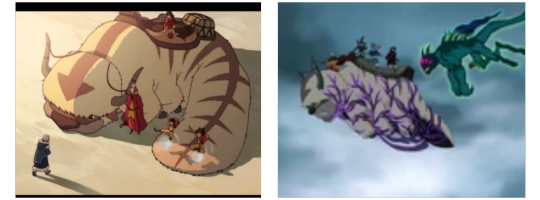
He also gets along great with Naga and he seemed to love the airship. Which makes sense since its probably his first time in the air where he doesn't have to be the one flying which has to be an experience.
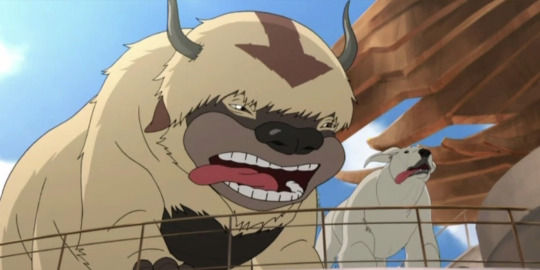
Also I love the theory that Oogi's name was inspired by Sokka saying that Katara and Aang's affection for each other gave him "the oogies"

Lefty
Lefty is Kai's bison and he is a fucking trooper.
After Kai and the airbenders save Lefty from the poachers, Lefty returns the favour by saving not only Kai, but also Tenzin, Asami, Mako and Bolin. He also helped Kai track the Red Lotus' airship which helped the group find Korra and the kidnapped airbenders!

He carried 5 whole people on his back as a fucken baby put some respect on his name!
Tragically he was stolen by the evil Bumi and Meelo at least once. But they took him for an adventure so ig its ok

Also he loafs

Pepper
Freckles. That is all but I think it's important nonetheless

Juicy
Ill be honest I fucking love Juicy. I know he's meant to be gross and all but I think he's probably thw most distinctive air bison we've seen ever and I can't help but find him endearing.
Like look at him! I know he's a snotty boi but he's so cute
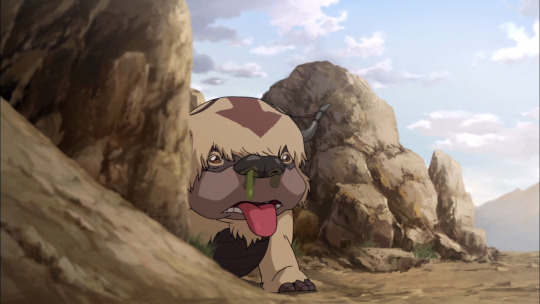
And he loves Opal so much! He's constantly nuzzling her and is particularly affectionate. Ans I like that while Opal good naturedly jokes about having checked if she can swap, she's still petting him and cuddling him and seems very loving of him too!

Ans this is really realted to him but I am not over the fact that Opal had an Air Bison picture in her room when she was a kid

Ita very important to me
#the tea party bisons are in a league of their own#tenzin#kai#jinora#opal beifong#avatar#legend of korra#tlok#the legend of korra#avatar the legend of korra#atlok#lok#sky bison#flying bison
51 notes
·
View notes
Text
Aang & Appa = BFFs



81 notes
·
View notes
Text
Appa hated it, at first. Fire was the element of the enemy, and Appa’s time away from his family only solidified that notion. Fire destroys, fire is an agent of chaos. Fire has no master. Fire burns.
Appa had thought it was over, that his weeks of flying the Earth Kingdom alone trying to find Aang would be cut short when he didn’t have the strength to fight his way out the his chains underneath Lake Laogi. He was smarter than most other animals, and knew his death was approaching much quicker than he ever thought.
He thought he would die by fire, not by earth.
Even with the Blue Spirit mask on, Appa still knew who had come to see him in chains. He reared up an anger and fear, but the metal links clanked taut, and he could not even get close to the figure.
Then, Prince Zuko has let him go.
It would sometimes get cold being so high in the mountains, the wind whistling through the odd structure of the Western Air Temple. Sometimes, Aang and his friends would curl around the Fire Prince, Aang’s claimed space always with his head pillowed against his firebending teacher’s belly, his cheek turned into the fabric of Zuko’s shirt. Sometimes the Avatar would drool a little, but Zuko would just give a gentle smile, and not bother to wake him.
When is was raining and the temperature dropped even farther, Zuko would sometimes breathe a small breath of fire above them, warming the air around them.
Aang’s arms would unconsciously wrap tighter around Zuko’s waist, humming in approval at the additional warmth.
Appa wasn’t afraid of Zuko’s fire.
Not when he was teaching Aang how to do the same thing, not when he was the one who freed him, not when it was his breathing that kept them warm on chilly nights.
Sometimes, when they were all asleep, including Zuko, Appa would snuggle against the Fire Prince’s head, (as well as he could, anyway) and did his best to keep him warm, too.
Fire was no longer an enemy, fire was his family.
#I was thinking about if Appa ever overcame his fear of fire through how much he loved Zuko and Aang#you can’t convince me they don’t use Zuko as a heater on cold nights#also you can’t convince me Aang doesn’t drool in his sleep#avatar the last airbender#avatar#atla#appa atla#appa avatar#sky bison#zuko#atla zuko#avatar zuko#prince zuko#firebending#GAANG snuggles#aang and zuko#avatar aang#aang
102 notes
·
View notes